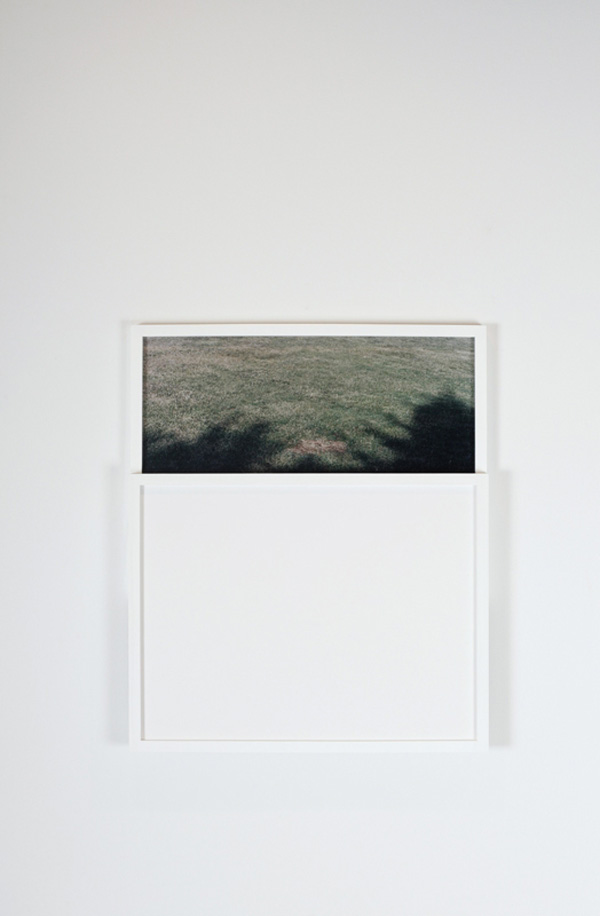Carey Denniston
Thursday, 4 July 2013
Work from To what degree a stone is a stranger/To what degree it is withdrawing
“Carey Denniston’s works upend our typical notion of how multi-panel photographs are supposed to function. Instead of shifting our attention from one panel to another, drawing out a narrative into a wider arc, or creating associations and juxtapositions between nearby images, she subverts those premises and uses one panel to obscure the other. It’s an inversion that not only undermines our expectations, but interrupts the photographs in such a way that their ability to deliver a legible narrative is undermined.
Each work is made up of a single photograph in white frame partially obscured by a blank white panel, like an opaque Japanese screen or a sliding door. These sculptural panels frustrate our ability to draw out a story, reducing the works to mysterious formal exercises. An image of a round plastic ball is cut in half, while another is narrowed down to the slats of an outdoor table and the boards of a wooden deck. In other works, the fragments of visual textures are more mysteriously edited, leaving behind small snippets of geometric tile flooring, a lumpy blue tarp, a rock wall with flecks of straw, and a woven white fabric. I was ever so tempted to push the white panel back to see more of what was going on, or to peek on the back side to see if there was any image hiding there; the eclipsed images give little clue to a larger purpose. But this dissonant set-up is what gives the works their friction – it’s disciplined, rational, and rigidly controlled, all in direct convention of what we’re used to.
Denniston’s works point to a heightened sense of the duality of photography, of a picture’s ability to be both a recognizable story and a set of abstract lines and forms at the same time. Her panels break up this effect, reducing a functioning photograph to a hint of its former self, stripping away our ability to easily interpret a narrative or context and leaving us with more questions than answers. Her works are like puzzles that can’t be figured out, momentarily annoying but seductively challenging. Unlike many contemporary photographs which shout from the walls to get our attention, these works actively hold back, in quiet, defiant resistance.” – DLK Collection


